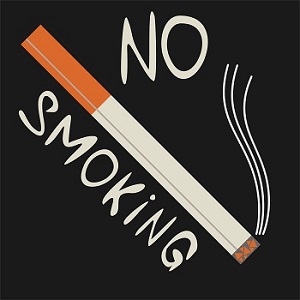PPZ3C
Unit 2: Factors that Influence My Health
Activity 5: What You Think And Do Matters To Your Health
How much sleep do we actually need? Depending on your age, you might actually be surprised at how much you should be getting.
Before watching the following video, predict how many hours of sleep you actually need. Reflect on whether you think you are getting enough sleep right now. Is there such a thing as too much sleep?
Making a conscious choice to sleep and stay out of "debt" is critical. This debt is actually a sleep debt. If you are interested in finding out more about this subject, click on the article title below to read the full article.
By David DiSalvo - Forbes Magazine - Feb. 23, 2014
Sleep, science tells us, is a lot like a bank account with a minimum balance penalty. You can short the account a few days a month as long as you replenish it with fresh funds before the penalty kicks in. This understanding, known colloquially as “paying off your sleep debt,” has held sway over sleep research for the last few decades, and has served as a comfortable context for popular media to discuss sleep with weary eyed readers and listeners.
The question is -- just how scientifically valid is the sleep debt theory?
Recent research targeted this question by testing the theory across a few things that sleep, or the lack of it, is known to influence: attention, stress, daytime sleepiness, and low-grade inflammation. The first three are widely known for their linkage to sleep, while the last—inflammation—isn’t, but should be. Low-grade tissue inflammation has been increasingly linked to a range of unhealthiness, with heart disease high on the list.
Study participants were first evaluated in a sleep lab for four nights of eight-hour sleep to establish a baseline. This provided the researchers with a measurement of normal attention, stress, sleepiness and inflammation levels to measure against.
The participants then endured six nights of six-hour sleep (a decent average for someone working a demanding job and managing an active family and social life). They were then allowed three nights of 10-hour catch-up sleep. Throughout the study, participants’ health and ability to perform a series of tasks were evaluated.

Sleep debt theory predicts that the negative effects from the first six nights of minimal sleep would be largely reversed by the last three nights of catch-up sleep – but that’s not exactly what happened.
The analysis showed that the six nights of sleep deprivation had a negative effect on attention, daytime sleepiness, and inflammation as measured by blood levels of interleukin-6 (IL-6), a biomarker for tissue inflammation throughout the body — all as predicted. It did not, however, have an effect on levels of the stress hormone cortisol—the biomarker used to measure stress in the study—which remained essentially the same as baseline levels.
After three-nights of catch-up sleep, daytime sleepiness returned to baseline levels – score one for sleep debt theory. Levels of IL-6 also returned to baseline after catch-up – another score in the theory’s corner. Cortisol levels remained unchanged, but that’s not necessarily a plus for the theory (more on that in a moment).
Attention levels, which dropped significantly during the sleep-deprivation period, didn't return to baseline after the catch-up period. That’s an especially big strike against the theory since attention, perhaps more than any other measurement, directly affects performance. Along with many other draws on attention—like using a smart phone while trying to drive—minimal sleep isn’t just a hindrance, it’s dangerous, and this study tells us that sleeping heavy on the weekends won’t renew it.
Coming back to the stress hormone cortisol, the researchers point out that its level remaining relatively unchanged probably indicates that the participants were already sleep deprived before they started the study. Previous research has shown a strong connection between cortisol and sleep; the less sleep we get, the higher the level of the stress hormone circulating in our bodies, and that carries its own set of health dangers. This study doesn’t contradict that evidence, but also doesn’t tell us one way or the other if catch-up sleep decreases cortisol levels.
The takeaway from the study is that catch-up sleep helps us pay off some, but by no means all of our sleep debt. And given the results on impaired attention, another takeaway is that it’s best to keep your sleep-deprived nights to a minimum. Just because you slept in Saturday and Sunday doesn’t mean you’ll be sharp Monday morning.
If you do not get enough sleep, your body may start to develop a sleep debt, which means it does not have time to repair and restore itself. This lack of sleep can affect your attention, stress, daytime sleepiness, and even cause low-grade inflammation.
The first three are widely known to be linked to a lack of sleep, and together can put someone at risk for heart disease.
Harvard Health Publications, (2016), recommends these tips for sleeping better, and improving your health through improved sleeping patterns:
- Go to sleep and get up at the same time every day.
- Get some sunlight every day.
- Don't sit for more than an hour.
- Limit caffeine, nicotine, alcohol.
- Take time for relaxing activities at night.
- Create a calm and peaceful sleep environment.
You can read more about each of the tips above by visiting the Helpguide.org website.
So do you think that your sleeping habits are having a negative impact on your health? The National Sleep Foundation website outlines the number of recommended hours of sleep that are needed for a variety of age groups. If you're not getting enough, this article includes some tips.
 Assignment: Your Sleeping Habits
Assignment: Your Sleeping Habits
Time to interpret and analyze.
Time to evaluate and draw conclusions.
Do you feel like you are living in a sleep debt?
Complete this chart or create your own chart to record the amount of sleep and type of sleep you got over the past seven days.
After completing your chart, analyse your sleep patterns over the last seven days and answer the questions below the chart. Look for patterns such as going to bed at the same time, or different times each night, or the number of hours per night.If you need more information to complete the related questions, perform an internet search.
Making sleep a priority is one health practice that will help you to function at your best each day and ward off potential health problems. Other health practices include getting regular medical examinations, dental checkups, eye examinations, and managing stress.
Healthy behaviours are the daily habits you try to follow to support your current and long term health. These behaviours include eating well, getting daily physical activity, spending time with friends to build healthy relationships, and building skills that help you be resilient. This is also about avoiding unhealthy behaviours that compromise your health. Avoiding tobacco, substance abuse, and other potentially addictive behaviours is also important because these can create dependencies that cause further stress and affect your health and sense of well being.

Tobacco is the leading cause of preventable illness and premature death in Canada. In Ontario, tobacco products kill over 16,000 people a year.
Smoking damages your heart and your blood circulation, increasing your risk of developing conditions such as:
- coronary heart disease;
- heart attack;
- stroke;
- peripheral vascular disease (damaged blood vessels); and/or
- cerebrovascular disease (damaged arteries that supply blood to your brain).
There are many different ways that tobacco can affect your life. Think about this issue as it best applies to you.
Pick one of the following two sections to read before moving on.
Watch the following video that includes Dr. Mike Evans speaking about the single best thing a person can do to stop smoking.
Secondhand smoke is the combination of smoke from the end of a cigarette and the smoke breathed out by smokers. Secondhand smoke causes many health problems in infants and children, including more frequent and severe asthma attacks, respiratory infections, ear infections, and sudden infant death syndrome (SIDS). Smoking during pregnancy results in more than 1,000 infant deaths annually. Some of the health conditions caused by secondhand smoke in adults include coronary heart disease, stroke, and lung cancer.
For more information, read The Harmful Effects of Secondhand Smoke and watch this public service announcement below about secondhand smoke and children:
 Assignment: Smoking is Not Smart. Stop it Now
Assignment: Smoking is Not Smart. Stop it Now
Your task is to create and deliver your message about the negative effects of smoking commercial tobacco on a person’s health. You should show how tobacco is the leading cause of preventable and premature death and how lifetime consequences may be a result of smoking. Your aim is to provide the health information in a convincing way to try to promote a change of attitude and behaviour in the person with whom you are speaking.
1. The following RAFT chart will help you to choose to whom and how you will deliver your message. The acronym RAFT stands for Role, Audience, Format and Topic. Read across the columns to choose the role you would like to assume, the audience you will address, the format that you will use to communicate your message, and the topic of your message.
| ROLE | AUDIENCE | FORMAT | PURPOSE |
|---|---|---|---|
| A friend | Your peers | A dialogue - create an audio recording or a phone call that happens between you and one of your peers. | You are both being pressured to use commercial tobacco or another substance. |
| An older sibling | Your younger sibling | A dialogue - create a video of a role play between you and your younger sibling or a person playing the role of your younger sibling. | Your younger sibling has confided in you that the other kids at school are pressuring her/him to use commercial tobacco or another substance. |
| A youth leader | Younger children in your community | A Prezi presentation delivered at the local elementary school or after school program using a minimum of five pictures. Make sure your message conveyed on the pictures. | You are supporting the children in your community to avoid using commercial tobacco or another substance. |
| A Healthy Community Advocate | Community members | A pecha kucha using a minimum of five pictures to convey your message. | You are persuading your community members to gain their support in helping you advocate for a community without commercial tobacco use or other addictive substances. |
2. Complete this RAFT assignment.
3. Complete the following self assessment about your communication skills.
Sexual Health

There never seems to be a shortage of conversation when it comes to discussions about personal choices and your sexual health. Having a sexual health plan, practising safer sex, improving your knowledge about STIs, and knowing when to go for regular medical check-ups for your personal wellness can all be overwhelming.
It is important for you to build your own health knowledge so you know where to access reliable medical information and health services when you need them.
This includes knowing how to obtain information from reputable sources such as websites or clinics. Consider this website that provides information about sexual health.
Health units in Ontario are publicly funded and service the areas in which they are located. They may offer such sexual health services as:
- abstinence, sexuality and safer sex counselling;
- STI testing/treatment;
- HIV/AIDS testing;
- low cost birth control;
- emergency contraception;
- pregnancy testing and options;
- pap testing;
- needle exchanges; and/or
- free condoms.
They offer free counselling that is confidential, and can often support you both in person and online. They have medical services that are easy to access; they also allow you to ask the questions when you need them answered in a confidential manner. They often have doctors and nurses ready to help you.
 Assignment: Take Some Time to Explore Your Community Services
Assignment: Take Some Time to Explore Your Community Services
- Search and find links to a minimum of three community health care resources in your community.
- Answer the following questions about each of the resources you selected.
- What are the health services offered?
- Who is the service meant to support (e.g., adults, children, youth, seniors)?
- How does the service enhance the health knowledge, practices and behaviours of members of your community?
- What is one service that is missing or could be more accessible in your community that would be beneficial to support your own health knowledge, practices, and behaviours?
Your attitudes and behaviours are also important to protect and improve your health. Your attitudes and behaviours can also have a big effect on the health of others, so public awareness campaigns are an important tool to promote health behaviours and attitudes that enhance the health of everyone in a community.
One example of a very important health campaign is the Draw the Line campaign in Ontario. It uses social media to promote positive attitudes and behaviours. Social media is often a great way for people to be connected, but it can also serve as an avenue for spreading rumours, photos that do not have consent to be shared, or a platform for harassment.
Draw the Line is a project started to help people in Ontario become more aware of the prevalence of sexual violence. It has created educational campaigns aimed at sexual violence prevention. The goal of the campaign is to educate Ontarians to spot sexual violence and empower them to make a difference.
Photo from UNWomen on Flickr
Another example of a campaign that was created by youth is from the Sasin Chulalongkorn University in Thailand. The program involved a community run motivated by the theme of "Hand in Hand, We Run for Respectful Relationships." It was part of the effort to mobilize young people to end violence against women and girls and promote healthy and equitable relationships between women and men.
Time to evaluate and draw conclusions.
 Assignment: You Need to Know What You Don’t Know - Part A
Assignment: You Need to Know What You Don’t Know - Part A
Consider both the previous ad and media campaigns above. They are both used as part of a campaign to promote positive health behaviours and attitudes.
- Find an ad or a commercial you have seen that was very effective at promoting positive health behaviours and attitudes.
- Skim and scan the three sites below to learn the criteria to consider when evaluating an ad or message for effectiveness:
- Designing Effective Health Messages
- Characteristics of an Effective Public Service Announcement
- The Qualities of a Good Advertisement
- Use three criteria from any of the sites you just viewed, to evaluate whether your ad or your commercial is effective in promoting positive health behaviours and attitudes.
- Use this graphic organizer to gather, organize, analyse, evaluate, and then communicate your perspective about your ad/commercial.
- Record your final perspective on your selectged ad in your notebook.
Throughout Unit 2, we have examined many different topics related to the personal, social, and environmental factors that influence a person’s health. These include:
- key social determinants of health (socioeconomic status, education, employment, social inclusion, quality of relationships, access to public health care services);
- different health care services and therapies to maintain/enhance personal wellness;
- how gender identity, sex, and cultural background influence personal health;
- how personal factors help to develop resilience;
- how heredity influences personal health;
- environmental issues and their impact on health (e.g., asthma, anaphylaxis, school and workplace conditions); and
- health practices and behaviours that influence personal health (smoking, sexual health, tanning beds, regular medical examinations).

We have also examined how our personal health practices (e.g., sleep, sexual health, getting regular medical examinations), our personal health attitudes and behaviours (e.g., getting enough sleep, eating healthy, exercising, avoiding tobacco, building resiliency skills) and our health knowledge (e.g., knowing how to access reliable medical information and health support services) are all factors that both protect and improve our health (e.g., build personal fitness, energy and stamina, relieve tension, avoid or delay chronic diseases later in life, improve our ability to deal with chronic diseases later in life).
One of these topics may have had more personal relevance to you or your community. Think about these different issues as they relate to your personal health. Is there one that is especially HOT in your community or personal life right now? What topics would you would like to explore more deeply?
Time to formulate questions.
Time to gather and organize.
Time to evaluate and draw conclusions.
Time to communicate.
 Assignment: A Healthy Today Equals a Healthy Tomorrow
Assignment: A Healthy Today Equals a Healthy Tomorrow
1. Choose two of the above topics to research and explore further in order to answer the following question:
How will having sound personal health practices, health knowledge, healthy behaviours and attitudes help you have a healthier life now and in the future?
2. Download and complete either template 1 or template 2. These will help you organize and research the topics that interest you.
3. You may present your findings in a report, a blog, a personal journal, an audio or video recording, or newspaper article, or any other format of your choosing. Just make sure the format will allow you to demonstrate your learning.
The following Youtube video, Stuck on an Escalator, pokes fun at how we are so used to taking the easy route that we can lose sight of the solution that is right in front of us. Hopefully, your wellness plan is not stuck like the people on this escalator!
 Assignment: Time To Check In with Your Wellness Goals
Assignment: Time To Check In with Your Wellness Goals
It is time to revisit your plan to reflect on how well you are meeting your wellness goals and to revise them based on your journey so far. Consider the following reflection questions:
- What personal decisions have you made over the last few weeks that may have great impact on your health? For example: Are you eating differently? Have you changed your sleep habits? Have you reduced unhealthy habits such as smoking or drinking too much coffee or alcohol? Have you increased your physical activity? Have you maintained your do one thing challenge? Have you found ways to reduce your stress?
- Complete this third action plan template to reflect on your progress in meeting your wellness goals and to consider any revisions to your goals you would like to make.